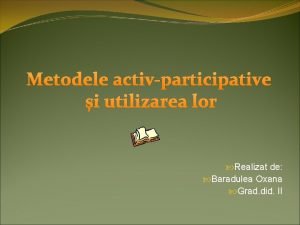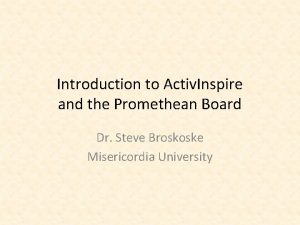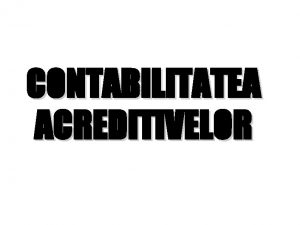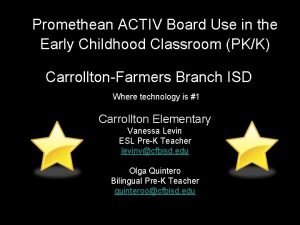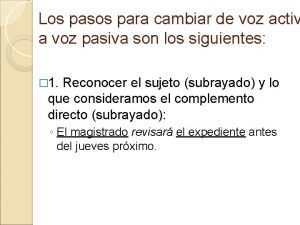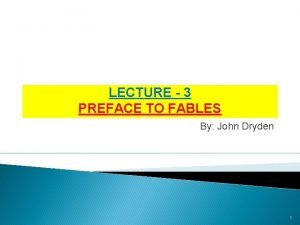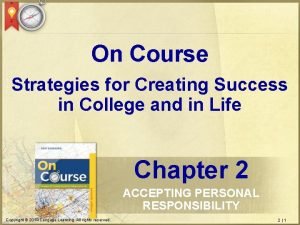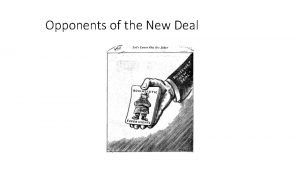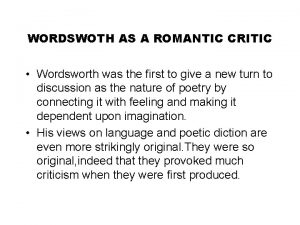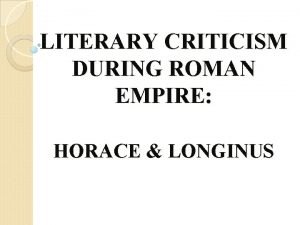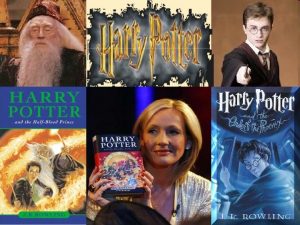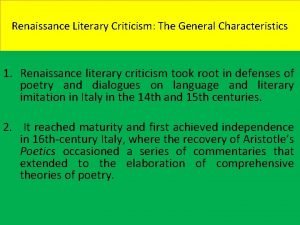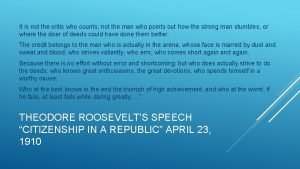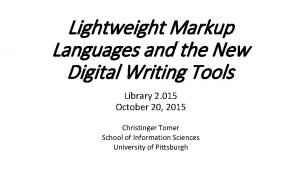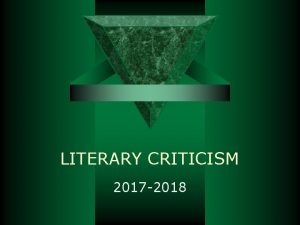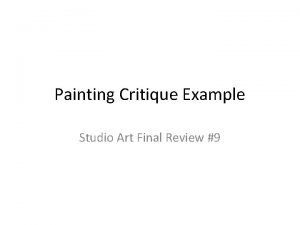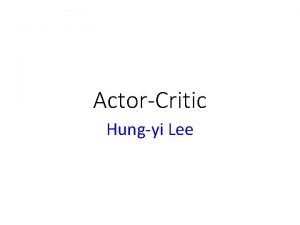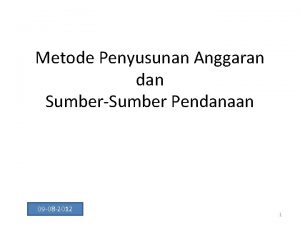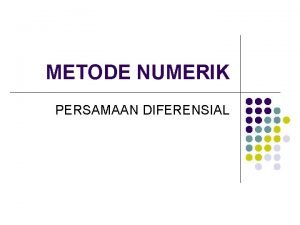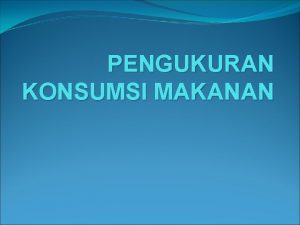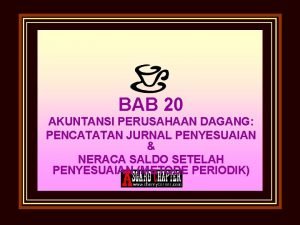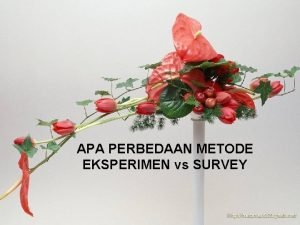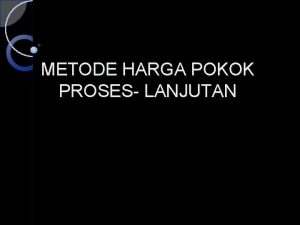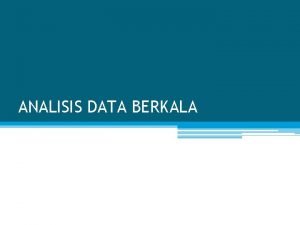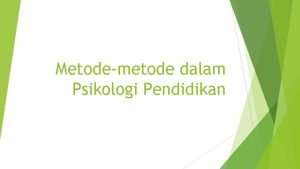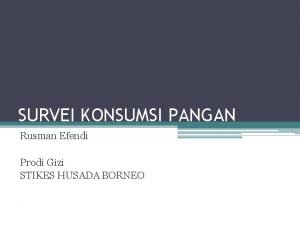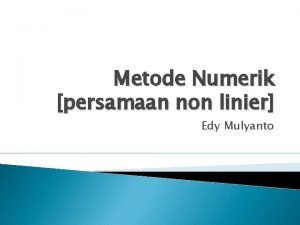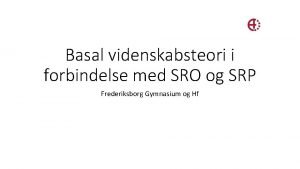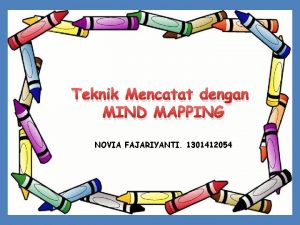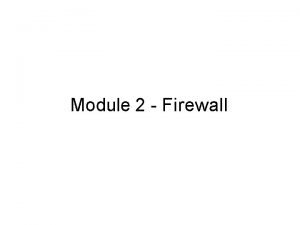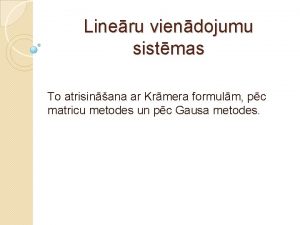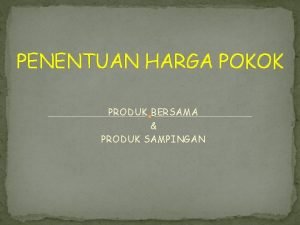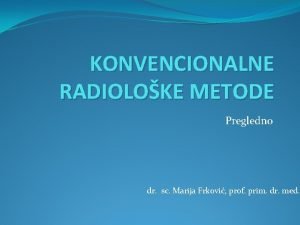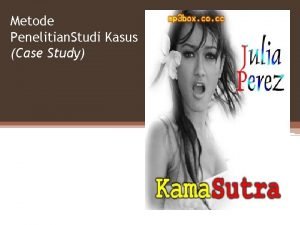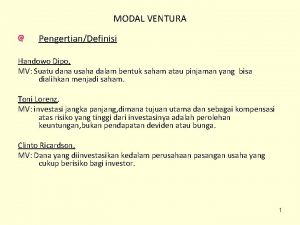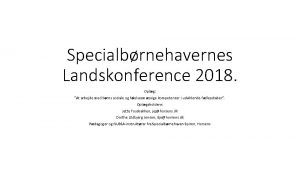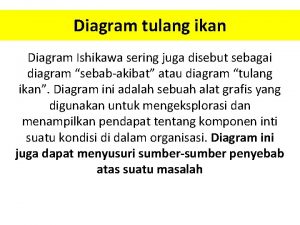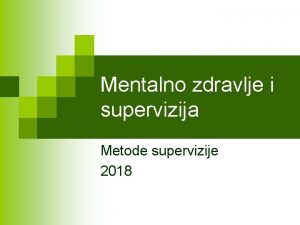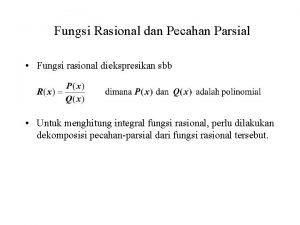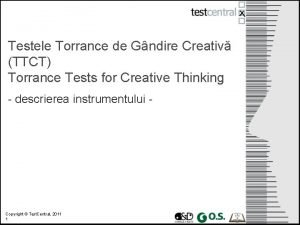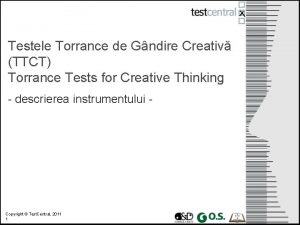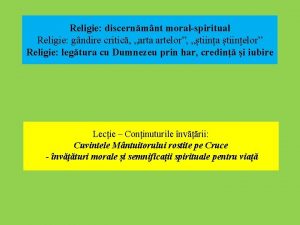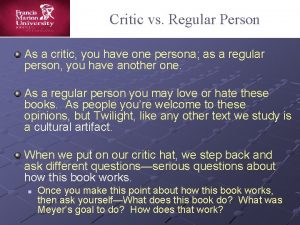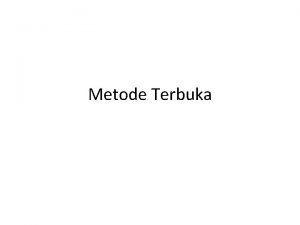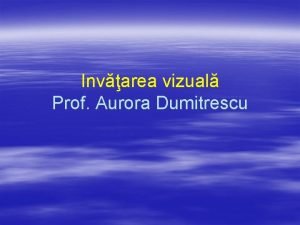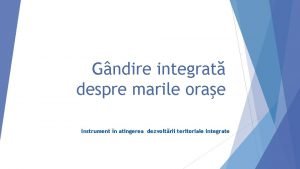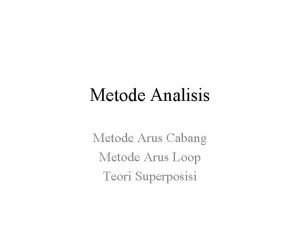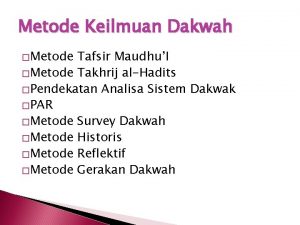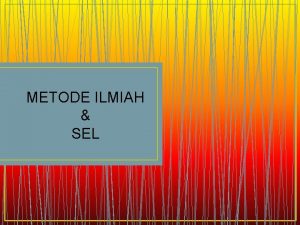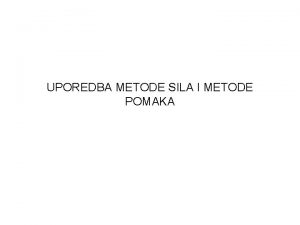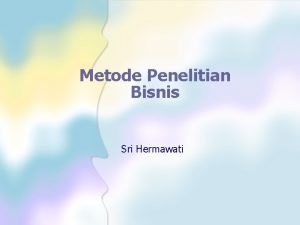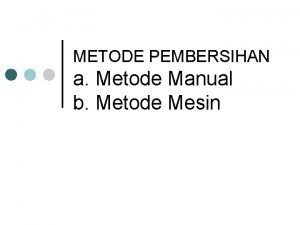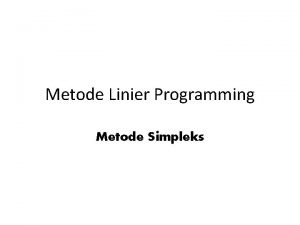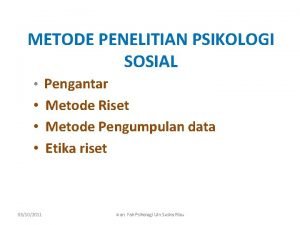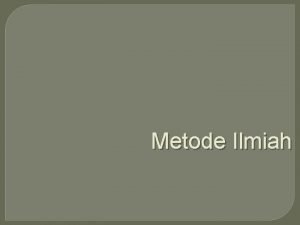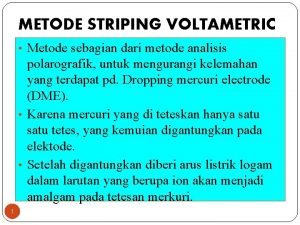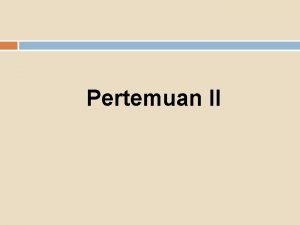Invarea activ metode de gndire critic i creativ














































- Slides: 46

“Invăţarea activă – metode de gândire critică şi creativă” “Active learning - critical thinking and creative methods “ Leahu Diamanda – Toni, C. C. D. 09. 02. – 13. 02. 2010 IASI

Protocol Fii punctual! Respect reciproc Fii un ascultător activ! Nu întrerupem vorbitorul! Respectă timpul acordat intervenţiei/sarcinii! Fiţi toleranţi! Dacă aveţi o întrebare, puneţi-o! Cereţi un exemplu dacă nu este clară o problemă! Fiţi sceptici, nu acceptaţi toate lucrurile pe care le auziţi! Critică ideea, nu vorbitorul! Argumentează atunci când ai altă părere! Propune alternative! Semnele convenite: mâna stângă – linişte; mâna dreaptă – cer cuvântul.

Protocol - Be punctual! Mutual respect Be an active listener! Do not interrupt the speaker? Respect the time for your intervention / task! Be tolerant! If you have a question, ask it! Ask for an example if the task is not clear to you! Be skeptical, do not accept everything you hear! Criticize the idea, not the speaker! Argue when you disagree! Propose alternatives! Signs agreed: left hand - silence, right hand – ask the permission to speak

GC (Bloom): implică – analiza, sinteza, evaluarea pe bază de criterii şi valori – asumate de individ şi practicate cu pricepere şi eficienţă. GC nu înseamnă „atac la persoană”. GC este un mod de a aborda şi rezolva problemele bazat pe argumente convingătoare, coerente-logic, raţionale. A gândi critic însă nu înseamnă neapărat a avea o poziţie negativistă, nerealistă, ineficientă! Critica poate fi: - constructivă, cu scop de fundamentare şi întemeiere a opiniilor, de argumentare raţională a acestora, de acceptare a lor în cunoştinţă de cauză. - distructivă, cu scop de demolare, o încercare de a justifica ceea ce nu este greu (sau aproape imposibil) de justificat şi acceptat (de către toţi).

CT (Bloom): involves - analysis, synthesis, evaluation based on criteria and values - assumed by individuals and practiced with skill and efficiency. CT does not mean "attack the person”. CT is one way to address and solve problems based on convincing, coherent-logical, rational arguments. To think critically does not necessarily have a negative, impractical, ineffective position! Criticism can be: - constructive, with the aim of substantiation and foundation of opinion; of rational argumentation, of acceptance - destructive, with the purpose of demolition, an attempt to justify what is difficult (or nearly impossible) to be justified and accepted (by all).

ROLURI ÎN ÎNVĂŢAREA PRIN COOPERARE Cronometrorul are grijă ca grupul să se concentreze pe sarcină şi ca lucrul să se desfăşoare în limitele de timp stabilite Ascultătorul activ extrage idei de la toţi membrii grupului şi repetă sau reformulează ce au spus alţii Responsabilul cu materialele distribuie şi adună materialele necesare grupului Cititorul citeşte materialele scrise pentru grup Raportorul expune concluziile grupului în faţa întregii clase Elevii trebuie să schimbe rolurile la fiecare activitate

Cooperative Learning Roles The timer - ensures that the group focuses on the task and the work to be conducted within the time set The active listener - gets ideas from all group members and repeats or reorders what the others have said The person in charge with the materials –distributes and collects the necessary materials for the group The reader -reads the materials for the group The reporter - exhibits the conclusions in front of the class NOTE: The students should change roles during every activity

Cadru de gândire şi învăţare Evocarea Se cere elevilor să facă brainstorming şi să alcătuiască liste cu ceea ce ştiu sau cred că ştiu, ca punct de plecare (individual, alteori în perechi şi/sau în grup). Cineva scrie ideile grupului pe tablă; se acceptă toate ideile Rolul profesorului este de a îndruma şi extrage ideile, precum şi de a-i asculta cu atenţie pe elevi. 1. Care este subiectul? (identificaţi-l) 2. Ce ştiţi deja despre el? (scrieţi pe tablă) 3. Ce aşteptaţi, vreţi să aflaţi despre el? (scrieţi pe tablă) 4. De ce trebuie să aflaţi aceste lucruri?

Framework for thinking and learning Evocation - It requires students to brainstorm and compile lists of what they know or believe that they know, as a starting point (individually, in pairs and / or group). - Someone writes the group ideas on the board, accepting them all The role of the teacher is to guide, underline the main ideas, and listen carefully to the students. 1. What is the subject? (identify) 2. What you know about that? (write on the board) 3. What do you want to know about that? (write on the board) 4. Why do you find these informations?

Realizarea sensului Faza de învăţare Elevul vine în contact cu noul conţinut (lectura unui text, vizionarea unui film, ascultarea unei prelegeri) Realizarea sensului se face de către elev pe măsură ce caută informaţii care să-i confirme anticipările. Profesorul: - nu influenţează elevii - susţine eforturile elevilor în monitorizarea propriei înţelegeri

Making sense Learning Phase The student comes into contact with a new content (reading of texts, watching a movie, listening to lectures) Grasping meaning is done by each student as they search for information that would confirm their predictions. Teacher: - doesn’t influence students - supports the efforts of the students in monitoring their understanding

Reflecţia Elevii: - îşi consolidează cunoştinţele noi şi îşi restructurează activ schema pentru a include în ea noi cunoştinţe; - îşi însuşesc cu adevărat cunoştinţele noi, are loc învăţarea durabilă. 1. Ce aţi aflat? (răspunsuri cât mai extinse) 2. Puneţi întrebări pentru a extrage informaţii importante care nu au fost menţionate în etapa de evocare. 3. Ca reacţie la răspunsurile lor, întrebaţi: "De ce credeţi asta? “

Reflection Students: - are reinforcing their knowledge actively and restructure the scheme to include their new information; -by acquiring the real knowledge, sustainable learning takes place 1. What did you learn? (largest possible answers) 2. Ask questions to extract important information not mentioned in the evocation stage. 3. In response to their answers, ask: "Why do you think that? "

Evocarea (pentru următorul segment de conţinut) Ce altceva credeţi că veţi afla? Ce n-aţi aflat încă din ceea ce aţi vrea să ştiţi? De ce este important acest lucru? De ce credeţi asta? (Amplificaţi discuţia şi adăugaţi informaţii la cele deja scrise pe tablă. )

Evocation (for the next segment of content) What else do you think you will find out? What haven’t you find out from what you would like to know? Why is this important? Why do you think that? (Boost discussion and add information to the ones already written on the blackboard. )

Brainstorming (metodă creativă de gândire) Ø Generează idei Ø Fără evaluare Ø Limită în timp Ø Citeşte ideile/cuvintele cheie cu voce tare Ø Clarificaţi ideile Ø Repetaţi procesul Ø Evaluaţi ideile (selectaţi pe cele mai bune)

Brainstorming (a creative way of thinking) Generates ideas No evaluation Time limited Read ideas / keywords aloud Clarify ideas Repeat the process Evaluate the ideas (select the best)

Metoda: SINELG Sistem Interactiv de Notare, pentru Eficientizarea Lecturii şi Gândirii Paşii metodei: Notează tot ce ştii/crezi că ştii despre. . . (3 -5 min) Spune ce ştii despre. . . (se notează ideile) Citeşte textul şi pune semne pe marginea articolului: “√” - dacă ceva din ce ai citit confirmă ceea ce ştiai/credeai că ştii “-” - dacă o informaţie pe care ai citit-o contrazice/diferă de ceea ce ştiai/credeai că ştii “+” - dacă o informaţie citită este nouă pentru tine “? ” - dacă găseşti informaţii care ţi se par confuze sau dacă vrei să ştii mai mult despre un anumit lucru.

Scurtă pauză (reflecţie 2 -3 min) Reia lista cu lucrurile ştiute; discută în perechi despre cunoştinţele confirmate şi cele infirmate Alcătuieşte un tabel SINELG individual, apoi în perechi (15 min) √ + - ? Discuţii în clasă asupra ideilor nelămurite (10 min) La nevoie se indică alte surse pentru informare

SINELG - Interactive Grading System for Streamlining Reading and Thinking Method steps : Write everything you know/ you think you know about. . . (3 -5 min) Say what you know about. . . (write down ideas) Read the text and put signs on the article: “√” - if you read something that confirms what you knew / you thought you know “-” - if you read a piece of information that contradicts / differs from what you knew / you thought you know “+” - if a read piece of information is new to you “? ” - if you find information that seem confusing to you or if you want to know more about this

Short break (think 2 -3 minutes) Resume the list of what you already know, discuss in pairs about knowledge confirmed and dispelled Draw up a table SINELG individually, then in pairs (15 min) √ + - ? Ideas in class discussion on questions (10 min) The need to indicate other sources of information

ŞTIU/VREAU SĂ ŞTIU/AM ÎNVĂŢAT (Ogle, 1986) Evocare Elevii formează perechi şi fac o listă cu tot ce ştiu despre tema nouă Construiţi pe tablă (în caiete) un tabel şi se completează coloana 1 Ştiu Ce cred că ştiu? Vreau să ştiu Ce vreau să ştiu? Am învăţat Ce am învăţat? Se formulează întrebări la care se aşteaptă aflarea răspunsului în lecţie (coloana 2) Realizarea sensului Se citeşte textul/ se urmăreşte o prelegere/un film didactic Reflecţie Se reia schema Ş/VŞ/AÎ şi elevii decid ce au învăţat completând coloana 3 Unele întrebări pot rămâne fără răspuns sau să apară altele noi Răspund elevii care ştiu, profesorul sau se indică bibliografie

I KNOW/ I WANT TO KNOW/ I’VE LEARNT (Ogle, 1986) Evocation (Brain storm info) The students work in pairs and make a list with everything they know about the new subject Make up on the board/ notebook a chart and you fill in column 1 I know What do I think I know? I want to know What do I want to know? I’ve learnt What have I learnt? They make up questions to which the answers are going to be given in the lesson (column 2) Comprehension techniques They read the text/ attend a lecture/ a didactic movie Reflection The Ogle pattern is being repeated and the students decide what they have learnt by filling in column 3 Some questions can have no answer or there may appear new ones The students who know answer, the teacher or information sources are being given

“CIORCHINELE” Scrieţi un cuvânt sau o propoziţie – nucleu în mijlocul unei pagini Începeţi să scrieţi cuvinte / sintagme care vă vin în minte legate de tema respectivă Începeţi să trageţi linii între ideile care se leagă într-un fel Scrieţi atâtea idei care vă vin în minte până expiră timpul sau nu mai aveţi altă idee REGULI (de bază): Scrieţi tot ce vă trece prin minte Nu faceţi judecăţi de valoare în legătură cu gândurile care vă vin, notaţi-le doar pe hârtie Nu vă preocupaţi de ortografie, punctuaţie sau alte reguli ale textului scris Nu vă opriţi din scris până nu a trecut destul timp Dacă ideile refuză să vină, zăboviţi asupra hârtiei şi până la urmă vor apărea Lăsaţi să apară mai multe conexiuni. Nu vă limitaţi numărul ideilor şi conexiunilor

The method: „THE GRAPE” Write a word or a key sentence in the middle of a page Start to write words/expressions that come to your mind related to the given subject Start to draw lines between the connecting ideas Write as many ideas as come to your mind until time is off or you have nothing else to say Basic rules Write everything that comes to your mind Don’t evaluate your ideas, just write them down Don’t bother about punctuation, spelling or other rules of the written text Don’t stop writing until enough time has passed If the ideas refuse o come, insist upon the paper and in the end they’ll show up Allow several connections to come up. Don’t limit the number of ideas and connexions.

“DIAGRAMA VENN” Este formată din două cercuri mari care se suprapun parţial Folosită pentru a arăta asemănările şi diferenţele între două idei, concepte/personaje Dacă elevii compară expediţia lui Columb cu cea a lui Marco Polo, diagrama permite să evidenţierea diferenţelor dintre cele două expediţii, arătând în acelaşi timp elementele comune Elevii completează, în perechi doar câte un cerc, care să se refere la unul din cei doi exploratori Se pot grupa câte patru pentru a-şi compara cercurile, completând împreună zona de intersecţie a cercurilor cu elementele comune

The method: „The Venn Diagram” It is made up of two large circles partially juxtaposed It is used to show the resemblances and the differences between two ideas, concepts or characters If the students compare the journey of Columbus with that of Marco Polo, the diagram allows to point out the differences between the two events, showing at the same time the common elements The students working in pairs fill in just one circle, which refers to one of the two explorers They can come in groups of four to compare their circles, filling in the common area of the circles.

TURUL GALERIEI În grupuri de trei sau patru, elevii lucrează întâi la o problemă care se poate materializa într-un produs (o diagramă, o schemă, un ciorchine) Produsele sunt expuse pe pereţii clasei La semnalul profesorului, grupurile se rotesc prin clasă, pentru a examina şi a discuta fiecare produs (10 min) Îşi iau notiţe şi pot face comentarii pe hârtiile expuse După turul galeriei, grupurile îşi reexaminează propriile produse prin comparaţie cu celelalte şi citesc comentariile făcute pe produsul lor (10 min)

The method: „ The gallery tour’ In groups of three or four, the students first work on a problem that can become a final product (a diagram, a chart, a grape) The products are being exhibited on the walls of the classroom At the teacher’s sign, the groups go round the classroom to examine and discuss each product (10 minutes) They can take notes and write comments on the exhibited papers After the gallery tour, the groups reexamine their own products by comparison with the others and read the comments written on their product (10 minutes)

CVINTETUL Scopul: formarea capacităţii de a rezume informaţia, de a surprinde complexitatea ideilor, sentimentelor şi a convingerilor (înţelegerea nuanţată a sensurilor) Poezie cu 5 versuri, cu transpunere concisă a ideilor care exprimă reflecţii asupra subiectului Timp: 5 - 7 min Elevii realizează întâi varianta individuală, apoi în perechi se rescrie un cvintet final care se citeşte clasei Instrucţiuni: v v v Versul 1: un singur cuvânt- titlul (descrie subiectul)= substantiv Versul 2: două cuvinte adjective (descriere) Versul 3: trei verbe la gerunziu care exprimă acţiuni (acţiune) Versul 4: patru cuvinte care exprimă sentimente faţă de subiect Versul 5: un cuvânt care exprimă esenţa subiectului

The method: „The quintet” The aim: to shape the ability of resuming the information, to grasp the complexity of ideas, feeling and convictions. A five verse poem, with a clear presentation of the ideas which express opinions upon the given subject Time: 5 - 7 minutes The students work first on the individual draft, then in pairs, they rewrite a final quintet which they read in the class Instructions Line 1: one word-the title (describes the subject) Line 2: two adjectives ( description) Line 3: three gerund verbs which express actions ( action) Line 4 : four words which express the feelings towards the subject Line 5: a word which expresses the essence of the subject

Autoevaluare pentru utilizarea activităţii dirijate de lectură şi gândire Totdeauna 1. Fac predicţii pe baza titlurilor şi a ilustraţiilor 2. Ghicesc ce se va întâmpla pe baza genului sau a tipului de povestire citită 3. Când citesc mă gândesc la predicţiile mele 4. Sunt atent la detaliile care mă pot ajuta la noi predicţii 5. Şi când citesc altceva mă opresc şi mă întreb cât ştiu deja şi ce cred că va urma Uneori Niciodată

Selfevaluation in using the activity directed by reading and thought Always 1. 2. 3. 4. 5. I make predictions based on the titles and photos I guess what’s going to happen based on the type of the story When I read I think at my predictions I pay attention to the details that can help me to make new predictions Even when I read something else I stop and wonder if I already know what’s going on next Sometimes Never

Autoevaluarea grupului pentru discuţii Aproape totdeauna Uneori Niciodată 1. Ne asigurăm că înţelegem ce avem de făcut înainte de a începe 2. Ne ţinem de ceea ce avem de făcut 3. Fiecare contribuie cu păreri 4. Fiecare ascultă până la capăt înainte de a răspunde 5. Lăsăm să se exprime mai multe păreri înainte de a ajunge la concluzii 6. La sfârşit ne recapitulăm concluziile 7. Unul dintre noi ia notiţe amănunţite despre discuţia noastră

Group self-monitoring Group self-evaluation for discussions Almost always Sometimes Never 1. We check if we have understood very well what we have to do 2. We follow our tasks 3. Each of us contributes with opinions 4. Each of us listens to the end before answering 5. We express several opinions before reaching conclusions 6. In the end we round up our conclusions 7. One of us takes detailed notes of our discussion.

PORTOFOLIUL Un “pact”între elev şi profesorul care trebuie să-l ajute pe elev să se autoevalueze Se discută la începutul perioadei ce trebuie să ştie/ce trebuie să facă elevul de-a lungul procesului de învăţare Se realizează un diagnostic asupra nevoilor de învăţare ale elevilor pentru stabilirea obiectivelor şi criteriilor de evaluare; se discută cu elevii implicaţi în evaluare TIPURI DE PORTOFOLII: - de prezentare/ introductiv: selecţie a celor mai valoroase lucrări - de progres/de lucru: toate elementele desfăşurate în activitate - de evaluare: obiectivele, strategiile şi instrumentele evaluării, tabele cu rezultate

The Portfolio *A “pact” between the student and the teacher which should help the student in the process of self-evaluation * At the beginning of the period we discuss what the student must know/ must do during the whole process of learning * We diagnose the learning needs of the students in order to establish the evaluation objectives and their criteria; we discuss with the students involved in the evaluation process. *The presentation/introductory one: the selection of the most valued products *The progress/working one : all the elements on display in activity *The evaluation one: the objectives, the strategies and the instruments of evaluation, the result charts.

Structura portofoliului elevului - sumar - argument ( lucrările incluse, importanţa lor) - rezumate ale operelor literare studiate - eseuri cu tematică diversă, adaptată vârstei, interesului elevului, sugerată de profesor - articole, recenzii la diferite cărţi/articole critice - fişe individuale de studiu - proiecte individuale / de grup - temele curente - teste /lucrări semestriale - desene care ilustrează scene din opere literare sau ilustraţii posibile (elevi cu inteligenţă vizuală) - scheme/reprezentări grafice pentru relaţii între genuri, specii literare, opere curente/ mişcări literare, instanţe narative (elevi cu inteligenţă logicomatematică) - înregistrări, fotografii din activitatea individuală/de grup (vizite la muzee, case memoriale, excursii, ecranizări ale cărţilor valoroase, spectacole) - definiţii ale conceptelor operaţionale, din programele naţionale - interviuri cu diverse personalităţi culturale/literare - comentarii suplimentare/evaluări ale profesorului, colegi de grup

The Structure of the Student’s Portfolio The summary The argument (the works included and their importance) Summaries of the studied literary works Essays on different topics suggested by the teacher, adapted to the age and the student’s interests Articles, commentaries on different books/articles of criticism Individual worksheets Individual/group projects Current home assignments Term tests Drawings which illustrate scenes from literature or just possible illustrations ( for students with visual abilities) Charts/graphic representations for connections between genres , literary species, current works/literary movements, narrative processes (for students with logical-mathematical intelligence) Recordings, photos from individual/group activities (museum visits, memorial houses, trips, movies after famous books, shows) Definitions of the operational concepts of the national programmes Interviews with different personalities of the cultural/literary life Supplementary commentaries/evaluations of the teacher or group colleagues.

EVALUAREA PORTOFOLIULUI Criterii de apreciere şi indici Da Parţial 1. Prezentare - evoluţia evidenţiată faţă de prezentarea anterioară - dacă e complet - estetica generală 2. Rezumate: - calitatea referatelor - concordanţa cu temele date - cantitatea lucrărilor 3. Lucrările practice: - adecvarea la scop - eficienţa modului de lucru - lucru individual / de grup 4. Reflecţiile elevului pe diferite părţi ale portofoliului: - reflecţii asupra propriei munci - reflecţii asupra muncii în grup - aşteptările elevului de la activitatea desfăşurată Nu Observaţii

The Portfolio Evaluation criteria items Yes Partially No Observations 1. Presentation - a clear evolution in comparison with the previous presentation - completeness - general layout 2. Summaries - the quality of the paperwork - the coordination with the given subject - the quantity of the final products 3. Practical workshops -adequate target -the efficiency of the working method - individual/group work 4. The student’s opinions on different parts of the portfolio - reflections upon his own work - reflections upon group w - the student’s expectations from the ongoing activity.

5. Cronologie: - punerea în ordine cronologică a materialelor 6. Autoevaluarea: - autoevaluarea activităţilor desfăşurate - concordanţa scop – rezultat - progresul făcut - nota pe care crede că o merită 7. Alte materiale: - calitatea acestora - adecvarea la tema propusă - relevanţa pentru creşterea aprecierilor

5)Chronology - ordering the materials according to their chronological status 6) Self-evaluation - self-evaluation of the performed activities - the coordination between target and result - the registered progress - the grade he thinks he is entitled to 7) Other materials - their quality - their relevance to the proposed theme - their importance to raising appraisal

PORTOFOLIUL DE GRUP COPERTA (REFLECTĂ CREATIV PERSONALITATEA GRUPULUI) • Cuprinsul • Prezentarea grupului şi a membrilor săi • Introducerea şi argumentaţia asupra mostrelor alese • Mostre care au necesitat cooperarea membrilor grupului • Observaţii ale membrilor privind modul lor de interacţiune în timpul activităţilor în comun • Autoevaluări ale membrilor şi evaluarea grupului de către aceştia • Mostre individuale revizuite pe baza feedback-ului primit de la grup (compoziţii, produse) • Autoevaluări ale membrilor privind calităţile şi punctele slabe ale interacţiunii sociale • Modul în care au potenţat eficienţa grupului şi au ajutat alţi colegi să înveţe • Lista viitoarelor obiective de învăţare şi deprinderi sociale pe care şi le propun membrii grupului • Comentarii şi feedback din partea profesorilor, metodiştilor/altor grupe de studiu

The Group Portfolio The Cover ( it reflects in a creative way the group’s personality) The contents The introduction of the group and its members The introduction and the argumentation of the chosen samples Samples which have required the joint effort of the group members Observations of the group members according to the way they interacted during common activities Self-evaluation of the members and their own group evaluation Individual samples changed upon the received feed-back from the group ( essays, final products) Self-evaluation of the members regarding the qualities and weak points of the social interaction The way they have raised group awareness and helped other colleagues to learn The list of the future learning targets and social behavior which the group members establish Commentaries and feed-back from the teachers, Methodists and other study groups.

SUCCES! GOOD LUCK!
 Cvintet metoda
Cvintet metoda Promethean active primary
Promethean active primary Transport
Transport Acreditive activ sau pasiv
Acreditive activ sau pasiv Activ student
Activ student Voz activ
Voz activ Preface to fables
Preface to fables Inner critic and inner defender
Inner critic and inner defender Charles coughlin criticism of the new deal
Charles coughlin criticism of the new deal Wordsworth as a romantic critic
Wordsworth as a romantic critic Inner defender examples
Inner defender examples Horace and longinus
Horace and longinus Harry qu
Harry qu Literary criticism in the renaissance
Literary criticism in the renaissance It is not the critic who counts
It is not the critic who counts Lightweight markup language
Lightweight markup language Formalism/structuralism
Formalism/structuralism Example of art critique
Example of art critique Actor critic network
Actor critic network Metode penyusunan anggaran
Metode penyusunan anggaran Metode euler numerik
Metode euler numerik Metode-metode survei konsumsi makanan
Metode-metode survei konsumsi makanan Metode kotor dan metode bersih
Metode kotor dan metode bersih Metode bruto dan metode netto
Metode bruto dan metode netto Survey vs experiment
Survey vs experiment Pentingnya kesejahteraan karyawan adalah … *
Pentingnya kesejahteraan karyawan adalah … * Metode harga pokok proses lanjutan
Metode harga pokok proses lanjutan Contoh soal analisis data berkala
Contoh soal analisis data berkala Skala iq wechsler
Skala iq wechsler Contoh soal metode biseksi dan penyelesaiannya
Contoh soal metode biseksi dan penyelesaiannya Makalah survei konsumsi pangan
Makalah survei konsumsi pangan Metode tertutup metode numerik
Metode tertutup metode numerik Perbedaan on the job training dan off the job training
Perbedaan on the job training dan off the job training Srp videnskabsteori
Srp videnskabsteori Contoh teknik mencatat
Contoh teknik mencatat 2 metode untuk menyederhanakan rule firewall
2 metode untuk menyederhanakan rule firewall Gausa metode
Gausa metode Harga pokok produk bersama dan produk sampingan
Harga pokok produk bersama dan produk sampingan Razrjeđenje koštane strukture
Razrjeđenje koštane strukture Case analysis adalah
Case analysis adalah Metode transportasi nwc, lc dan vam
Metode transportasi nwc, lc dan vam Handowo dipo
Handowo dipo Neuroaffektive trekant
Neuroaffektive trekant Diagram ishikawa adalah
Diagram ishikawa adalah Metode supervizije
Metode supervizije Makalah penaksiran fungsi permintaan
Makalah penaksiran fungsi permintaan Pengertian fungsi rasional
Pengertian fungsi rasional
